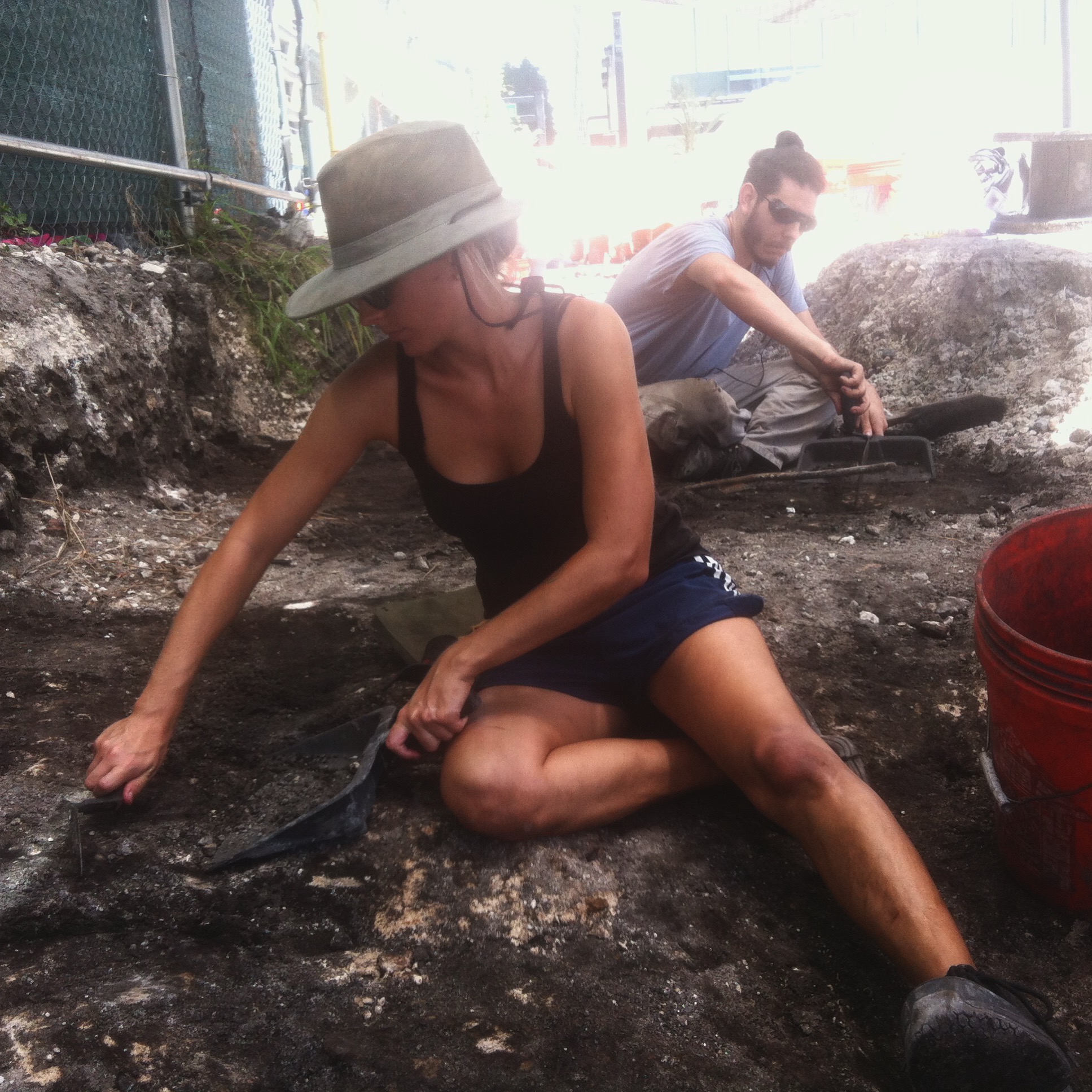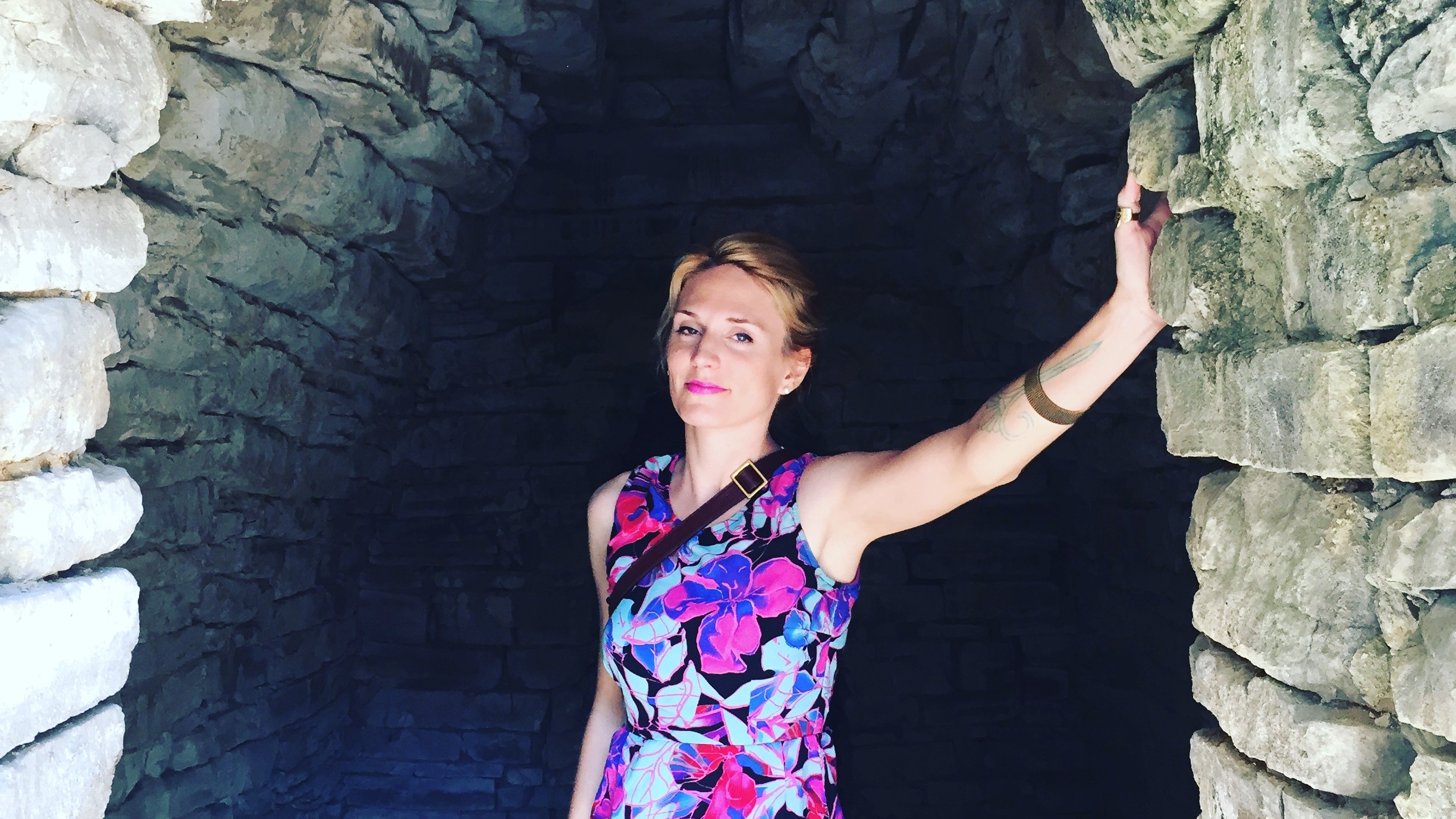When it comes to research interests, who says you have to choose to work in only one field? Meryl Shriver-Rice, Ph.D. '11 is a media anthropologist and archaeologist who is applying her interdisciplinary training to find comprehensive solutions to complex issues, such as how culture affects the climate change debate. Dr. Shriver-Rice's journey into academia shows how seemingly unrelated interests can be combined to find innovative approaches to today’s challenges.
As an archaeologist and palaeoethnobotanist, Dr. Shriver-Rice's fieldwork focuses on humans’ use of plants in prehistoric and ancient pre-Roman central Italy, particularly their social, cultural, and symbolic relationship to plants. For two years, she has brought UM Ecosystem Science & Policy students to the Poggio Civitate Archaeological Project in Tuscany to be a part of the site’s first archaeobotanical team. Through her work in media studies, she has focused on visual rhetoric and how style, aesthetics, identity, and political leanings impact people’s understanding of environmental issues.
Integrating her competing interests did not always lead to a seamless path for Dr. Shriver-Rice. She began her studies in biology and aerospace studies with the intention of becoming a field biologist. Realizing that she wanted to pursue field excavation, she switched to studying paleontology where she completed substrate removal on the Antarctic dinosaur, Cryolophosaurus. However, she soon discovered that she preferred to address human questions. She completed dual degrees in anthropology and biology and went overseas to England to combine these degrees through palaeoethnobotany in a master’s in Archaeology with the intention of doing a Ph.D. in the same field. She then completed her archaeobotanical work on the UNESCO World Heritage site Çatahöyük in Turkey. While back in Miami to excavate on Brickell Avenue at a cultural resource management site, she met some UM graduate students studying media who sparked her interest in communication studies. After many discussions, she concluded that media and visual culture studies shared many of the same critical studies underpinnings as

After her Ph.D., Dr. Shriver-Rice lived and taught in Los Angeles and New York City, publishing a book on gender and transnational media before eagerly accepting the opportunity to connect her passion for science communication to a city so dear to her heart—and so central to the climate change debate: Miami. “I am most interested in human relationships to the environment,” she explains. “We all have a highly-mediated relationship with the natural world, meaning that movies, television, Netflix, and smart phones are involved. Throughout all of my work, I use a sociocultural lens to examine the relationship that people have with nature.”
With this interdisciplinary expertise and her fascination with human relationships with the environment, Dr. Shriver-Rice took on the challenge of creating the first master’s program in Environment, Culture, and Media (ECM) in the country. The 18-month long program, which has both a Master of Arts and a Master of Professional Science (MPS) option, evolved out of a need for environmental studies that look directly at the power of contemporary media, but also consider the interdisciplinarity of cultural studies as one of the best ways to find solutions to complex topics. The program is housed under the Abess Center for Ecosystem Science & Policy, providing it a unique, innovative context for interdisciplinary research.
“The faculty at the Abess Center has always felt that we need interdisciplinary research methods to solve complex scientific problems. Most universities have either a Department of Environmental Studies or Environmental Sciences. Because we are a Center, we encompass both, creating a space for people who bring perspectives from each side,” she explained.
With the University’s focus on climate change and sea-level rise in Miami, Dr. Shriver-Rice has seen a huge increase in interest in this kind of research and interdisciplinary collaboration. “We have students from all types of majors apply for the new ECM program and take its courses, for example, English, advertising, chemistry, marine science, and art students. The program has grown exponentially, from only one student in its first year to now seven students, which is exceptional for most master’s programs in their first year,” she expressed.
Aside from her responsibilities leading and teaching for the ECM program and her new study abroad summer program in Science, Media, and Storytelling in Switzerland, Dr. Shriver-Rice continues doing work in archaeology, most recently at an Etruscan-era site north of Florence, as well as interdisciplinary research in environmental media. “My most recent media project is looking at environmental messaging in short form digital content, which is what most people are watching on social media to get information about climate change and sea-level rise,” she concluded. Sporting many coats, she is proof that interdisciplinarity can be both a research approach and a way of life.
You can follow the ECM program on Twitter and Instagram: @greening_media.

